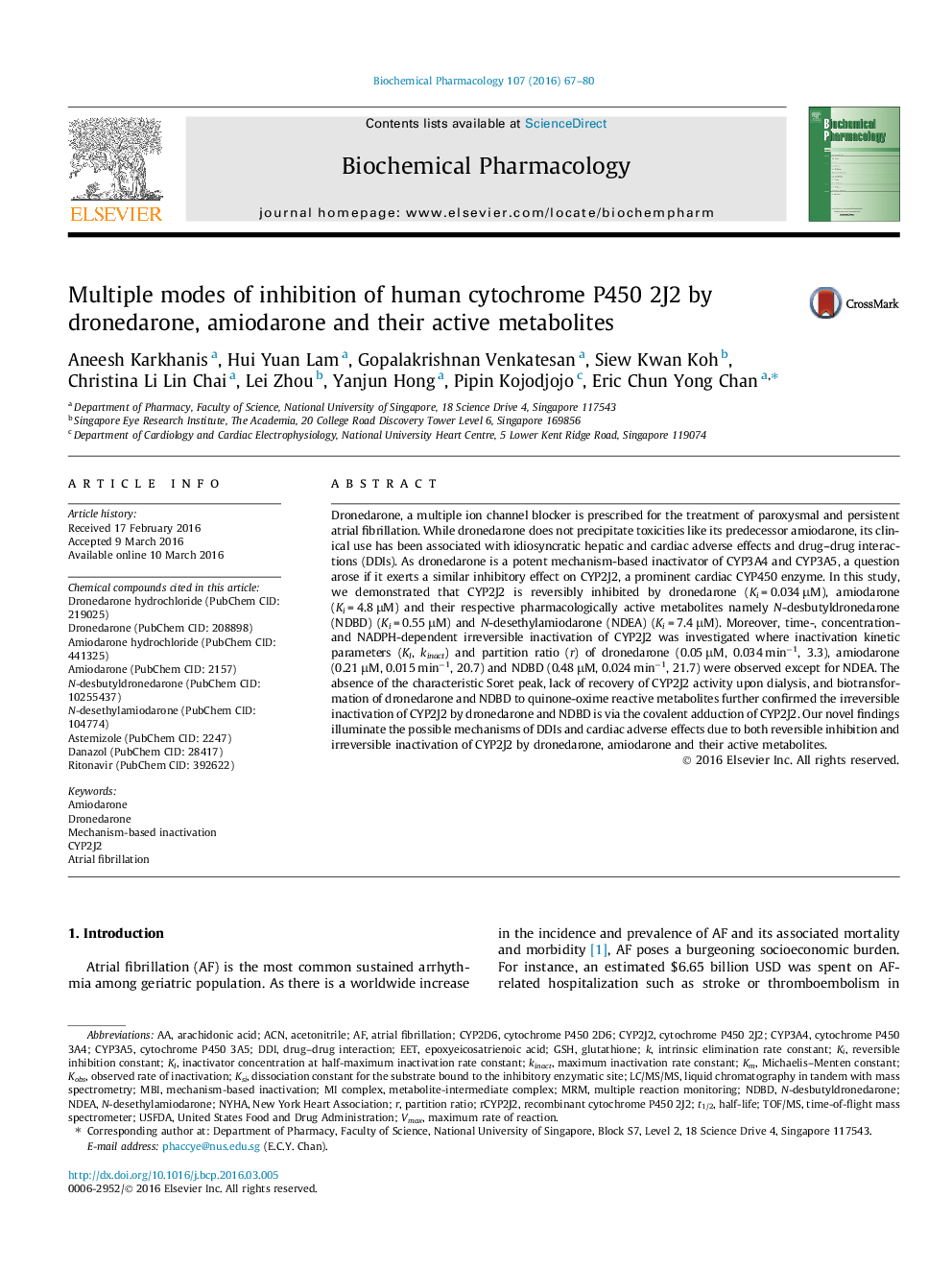| Article ID | Journal | Published Year | Pages | File Type |
|---|---|---|---|---|
| 2511802 | Biochemical Pharmacology | 2016 | 14 Pages |
Dronedarone, a multiple ion channel blocker is prescribed for the treatment of paroxysmal and persistent atrial fibrillation. While dronedarone does not precipitate toxicities like its predecessor amiodarone, its clinical use has been associated with idiosyncratic hepatic and cardiac adverse effects and drug–drug interactions (DDIs). As dronedarone is a potent mechanism-based inactivator of CYP3A4 and CYP3A5, a question arose if it exerts a similar inhibitory effect on CYP2J2, a prominent cardiac CYP450 enzyme. In this study, we demonstrated that CYP2J2 is reversibly inhibited by dronedarone (Ki = 0.034 μM), amiodarone (Ki = 4.8 μM) and their respective pharmacologically active metabolites namely N-desbutyldronedarone (NDBD) (Ki = 0.55 μM) and N-desethylamiodarone (NDEA) (Ki = 7.4 μM). Moreover, time-, concentration- and NADPH-dependent irreversible inactivation of CYP2J2 was investigated where inactivation kinetic parameters (KI, kinact) and partition ratio (r) of dronedarone (0.05 μM, 0.034 min−1, 3.3), amiodarone (0.21 μM, 0.015 min−1, 20.7) and NDBD (0.48 μM, 0.024 min−1, 21.7) were observed except for NDEA. The absence of the characteristic Soret peak, lack of recovery of CYP2J2 activity upon dialysis, and biotransformation of dronedarone and NDBD to quinone-oxime reactive metabolites further confirmed the irreversible inactivation of CYP2J2 by dronedarone and NDBD is via the covalent adduction of CYP2J2. Our novel findings illuminate the possible mechanisms of DDIs and cardiac adverse effects due to both reversible inhibition and irreversible inactivation of CYP2J2 by dronedarone, amiodarone and their active metabolites.
Graphical abstractFigure optionsDownload full-size imageDownload as PowerPoint slide
